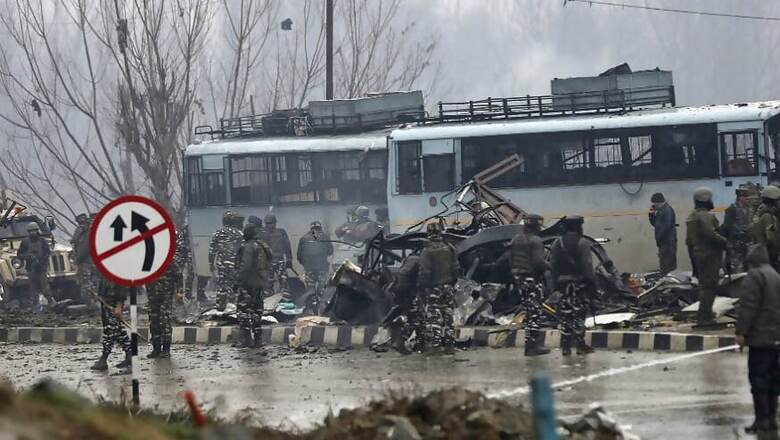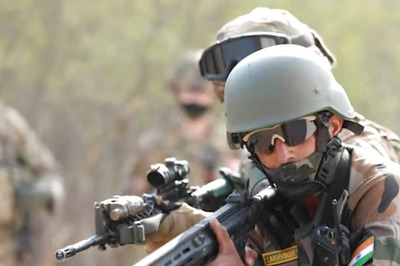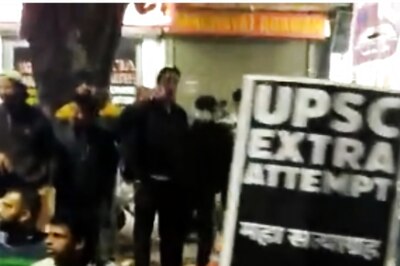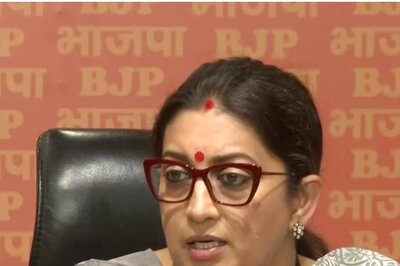
views
Available literature survey lists out comprehensive ‘war’ terms, such as limited war and total (or all-out) war, cold war, World War, proxy war, civil war etc.
Much of the difficulty stems from the fact that the nomenclature refer to different aspects and perspectives on war; war as condition, techniques of warfare, alleged motives and/or objectives of war, or assumptions about belligerent behaviour and the causes of war.
Therefore, war can be described as a species/genre of structured and unstructured violence; more specifically it is collective, direct, manifest, personal, intentional, organised, institutionalised, instrumental, sanctioned, and sometimes ritualised and regulated violence.
Classically, war is a state of armed conflict between different countries or different groups within a country or a sustained campaign against an undesirable situation or activity.
Von Clausewitz (1911) defined war as “an act of violence intended to compel our opponents to fulfil our will”, and elsewhere he emphasised the continuity of violence with other political methods: “War is nothing but a continuation of political intercourse, with a mixture of other means.”
Sorel (1912) defined war as a “political act by means of which states, unable to adjust a dispute regarding their obligations, rights or interests, resort to armed force to decide which is the stronger and may therefore impose its will on the other”.
As such war is a means of achieving an end, a weapon which can be used for good or for bad purposes. Putting it in Orwell’s famous dictum: “Peace is War”.
How do we define the line that divides war and conflict? What is dividing war from conflict and how that threshold has been meaningfully crossed? It is difficult to monitor and in subtle shades of progression, the dividing line is immaterial, as war is ultimately a question of political attitude and subject to all the vagaries of time and place.
One interesting attempt to fix the threshold quantitatively was made by Richardson (1960) who tried to arrange all “deadly quarrels” on a continuum of violent conflict, ranging from one killed (murder) to 10 million killed (Second World War). The threshold of war was crossed when deaths went over 1,000. Other than physical casualties, legitimation by an established governmental or quasi-governmental organisation, so that large-scale killing is viewed not as a crime but as a duty classifies it into a war.
Conflict has always been characterised by violence in the international system. This has been happening in a situation of growing complexity which has been brought about by the multiplicity of players in the international arena in the aftermath of de-colonisation. Therefore, the focus of concern has come to shift from war to preservation of peace through management of conflict.
It can be stated that war is an extension of conflict and irretrievable unless the cessation of hostilities and on the other end conflicts can be managed. Data compiled by Eckhardt and Azar (1978) lists 265 major world conflicts and 105 major interventions for the years 1945 to 1975. The analysis shows the regional, temporal, and typal distributions of conflict. Many showing internal interventions-years, and some showing external parties.
The studies reveal that conditions relevant to war have changed more radically since 1942 than in any other period of human history. There is general consensus, however, that during this period there has been a decline in conventional inter-state wars, in wars fought for territorial gains, in colonial-imperial wars, and in wars fought in Europe or America.
While an increase in ethno-national (including irredentist and secessionist) wars, fought within the boundaries of a single state, and in wars fought in Asia, Africa, and the Middle East for short, the “Third World”.
Legends of valour and folklore around wars and battles give us an insight into a long tradition of unflinching loyalty surrounding armed forces of India on the line of duty. The driving force behind India’s military ethos for centuries has been Izzat, Naam, Namak aur Nishan. Indian soldiers have fought and died for these intangible values. Men have sacrificed in the honour of their country, their service, their unit and their community.
From time immemorial, this concept has pervaded the psyche of the Indian warrior and made his name a byword for chivalry and steadfast devotion to duty. History of valour and folklore tells us many episodes from ancient period — Battle of Hydaspes to medieval and modern times. War narratives are replete with examples of this spirit of devotion unto death, which have led Indian troops to stand their ground to the last man and the last bullet against all odds.
From the hallowed ground of Saragarhi, where a small band of 21 soldiers fought against a 10,000-plus strong tribal army in 1897, to the fields of France and Flanders, Gallipoli and Mesopotamia, the defence of Budgam and Srinagar Airfield by Major Somnath Sharma, PVC and heights of Rezang la where Major Shaitan Singh and his small band gave up their lives rather than yield even an inch of their motherland to the invading Chinese in 1962, to Captain HND Mulla, who went down with his torpedoed ship in 1971, there are numerous such examples. These testify to the ‘death before dishonour’ ethos of the Indian armed forces.
In the modern times, we witnessed incursion in Kargil where some Pakistani Mujahideens occupied the heights sometime around April 1999 code named "Operation Badr". Later on, they were joined by regular Pakistan troops. Their overall number was around 5,000 initially and was later scaled to 30,000 regular and irregular troops. The area that witnessed the infiltration and fighting was 160-km long stretch along the LoC, overlooking a vital highway in Kashmir.
Apart from the district capital, Kargil, the front line in the conflict engulfed the tiny town of Drass as well as the Batalik sector, Mushko Valley and other nearby areas along the de facto border. The military outposts on these ridges were generally around 5,000 metres (16,000 feet) high, with a few as high as 5,600 metres (18,000 feet). One of the main reasons why Kargil was specifically targeted for incursions was its terrain lent itself to a pre-emptive seizure. The Aim was to sever the link between Kashmir and Ladakh, and cause Indian forces to withdraw from the Siachen Glacier, thus forcing India to negotiate a settlement of the broader Kashmir dispute.
Pakistan also believed that any tension in the region would internationalize the Kashmir issue, helping it secure a speedy resolution.
India responded with ‘Operation Vijay’, with mobilisation of 2,00,000 Indian troops as a posture along with extensive diplomacy to isolate Pakistan. However, because of the nature of the terrain, division and corps operations could not be mounted; the scale of most fighting was at the regimental or battalion level. A division of the Indian Army, numbering 20,000+plus and several thousand from the paramilitary Forces and the air force were deployed in the conflict zone.
The total number of Indian soldiers involved in the military operation on the Kargil-Drass sector was thus close to 25,000. In some vital points, neither artillery nor air power could dislodge the outposts manned by the Pakistan soldiers, who were out of visible range.
As a result, the Army mounted some direct frontal ground assaults which were slow and took a heavy toll given the steep ascent that had to be made on peaks as high as 18,000 feet (5,500 m) with the wind chill factor, the temperatures were often as low as −11°C to −15°C (12°F to 5°F) at the mountain tops.
Since the engagement was limited in number of troops and equipment it would not qualify to be called a war. It was more like an intensive border conflict. By saying so, we are in a way trying to reduce the importance of the innumerable cases of raw courage and bravery displayed by the Indian soldiers during the Kargil conflict. We are just trying to prepare the country for major conflicts that it may have to face in the foreseeable future.
The brief conflict has provided considerable material for both filmmakers and authors the list of the major films and dramas on the subject. LOC: Kargil (2003), Dhoop (2003), Lakshya 2004 and Mission Fateh - Real Stories of Kargil Heroes, a TV series chronicling the Indian Army's missions. Fifty Day War, a theatrical production on the war was claimed to be the biggest production of its kind in Asia, involving real aircraft and explosions in an outdoor setting.
(Major General Sunil Chandra, VSM (Retd) has co-authored a book titled ‘Valour & Wisdom: Genesis & Growth of the Indian Military Academy’. He has recently written on World War I for the Historical Division, Ministry of Defence. Views are personal)




















Comments
0 comment